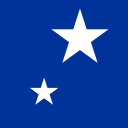Thank you for joining us for ten years of Lean UXmas!
We hope you’ve enjoyed it!
If you’re a leader and/or senior practitioner — you should subscribe to our newsletter Quiet Stories. We bring you curated articles to help you deal with the messy space where strategy work, delivery work, and research work overlap.
No fluff — just useful, applicable information delivered to your inbox every other week. Check out the archive if you don’t believe us.
Have a Merry Christmas and a Most Excellent New Year!
Kathryn & Adrian
